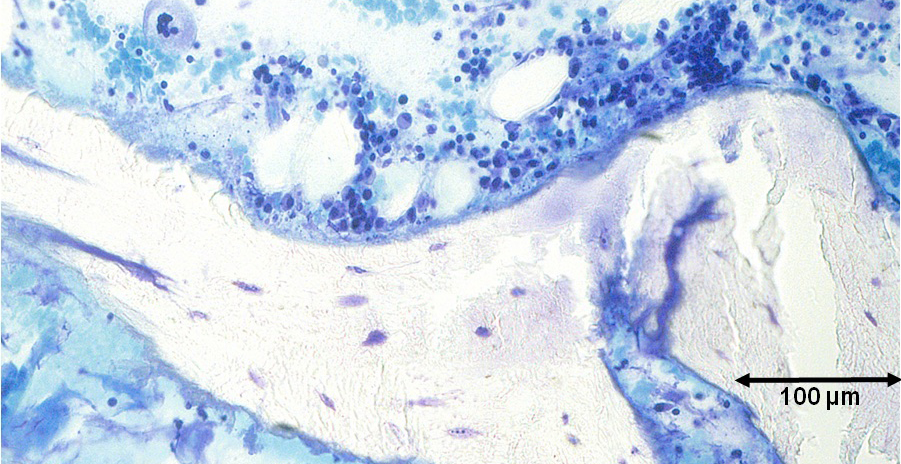
Vitamin D Metabolism and Regulation in Pediatric MSCs
The Stepping Strong Research Scholar team of orthopedic researchers explore how stem cells can advance bone regeneration for trauma patients. In this article, a team led by Research Scholar Julie Glowacki, PhD, examines ways to optimize bone growth using discarded stem cells.
Our latest study focuses on human marrow-derived mesenchymal stem cells (MSCs). MSCs are unique in that they have the capacity to differentiate into bone-forming cells, called osteoblasts. We’ve long known that vitamin D sufficiency is important for skeletal health. Several years ago we discovered that MSCs have the ability to synthesize and activate vitamin D, making the MSC cells both a source and a target of active vitamin D.
In our study, we found an unexpected difference in the rate of vitamin D metabolism in MSCs between male and female children—variations that were not found between male and female adults. There were significantly higher levels of enzymes and receptors involved in vitamin D synthesis and activation in MSCs from male children between 8 and 12 years of age compared to their female counterparts, with differences ranging from 2.6- to 3.5-fold. By treating cells from girls with a vitamin D precursor molecule, we were able to dramatically increase those levels in cells.
In addition to illustrating how puberty may trigger systems growth spurts differently in boys and girls, these discoveries may also indicate a relative vitamin D deficiency in prepubescent girls as compared with boys. Current research seeks to determine the significance of these findings and to translate them to clinical care, with a goal of ensuring skeletal health in all children.
Having the distinctive opportunity to study human cells that otherwise would be discarded gives our team a powerful tool for optimizing inherent repair and regeneration following injury. Discarded cells show us the various ways that the cells “remember” and retain information (e.g., gender, age, diagnoses, and medications taken at the time of surgery), improving our potential for assessing cell-based therapies.
This paper, which is available online, is the second from Glowacki’s team that cites support from the Gillian Reny Stepping Strong Center for Trauma Innovation. The research was spearheaded by Brian Ruggiero, a student at the Harvard School of Dental Medicine who began his research training in Glowacki’s lab during his undergraduate program at Tufts University. That training provided the foundation of this research project, written in collaboration with Dr. Bonnie Padwa, a pediatric oral surgeon at Boston Children’s Hospital, K.M. Christoph, and S. Zhou.
